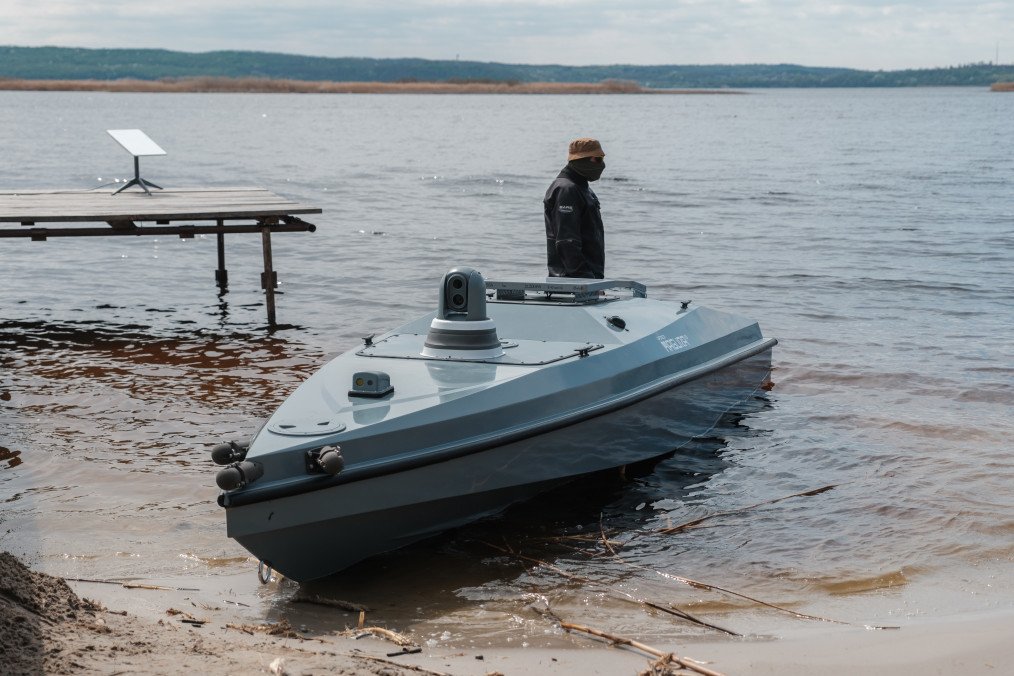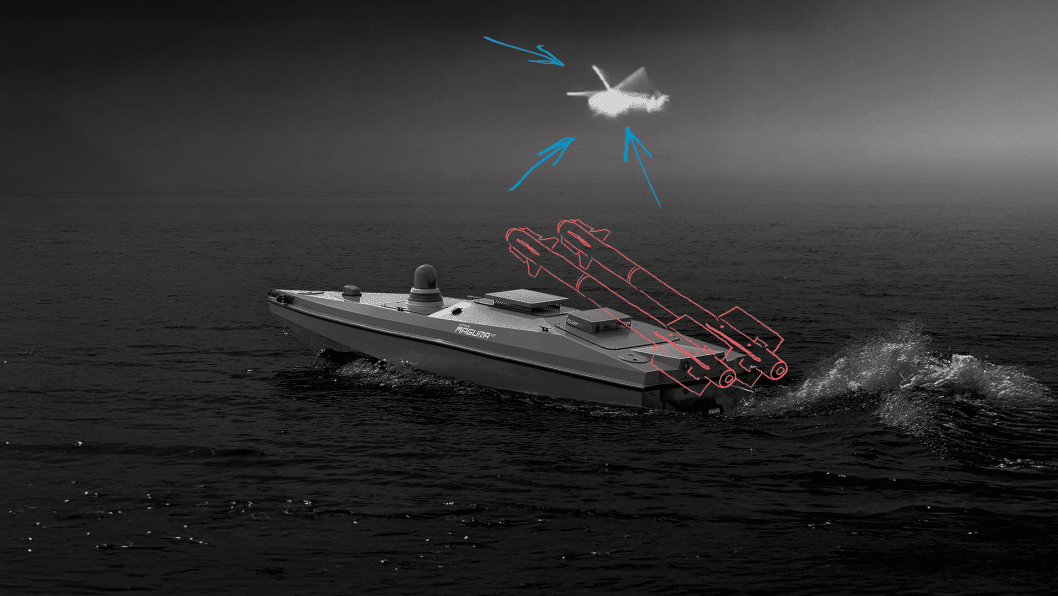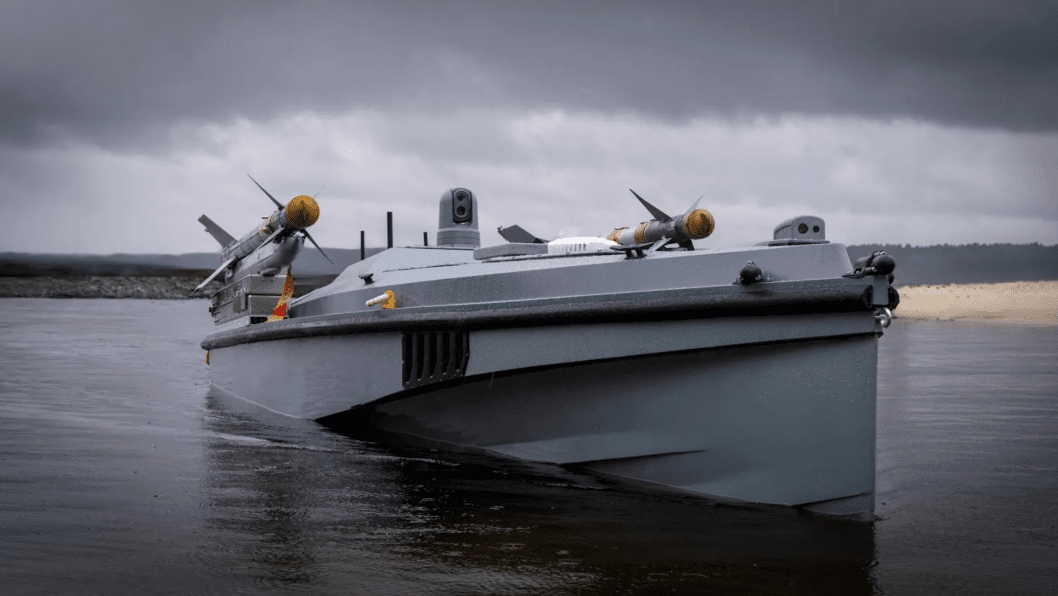- Category
- Latest news
Ukrainian Sea Drones Push Russia to Revive “Katran” Program After $350 Million in Warship and Jet Losses

Russia is intensifying efforts to develop its own naval drones after losing an estimated $350 million in warships and aircraft to Ukraine’s expanding fleet of sea drones, according to Defense Express on May 8.
The revival of the “Katran” drone program comes as Ukraine’s MAGURA V5 drones continue to redefine naval warfare in the Black Sea, sinking multiple Russian vessels and even downing fighter jets in a series of unprecedented operations.
The reactivation of the Katran project follows one of these landmark strikes — the first confirmed case of a sea-based drone downing a Russian fighter jet.
While the Katran was initially presented in mid-2024, it received little serious attention until Ukraine’s drone-led naval campaign forced much of Russia’s Black Sea Fleet into port.
Ukrainian naval drones, particularly the MAGURA V5, have demonstrated unprecedented effectiveness against Russia’s Black Sea Fleet, sinking multiple vessels and even shooting down aircraft in a series of historic operations.
One of the earliest high-profile strikes occurred in February 2024, when Ukrainian drones destroyed the Russian missile corvette Ivanovets near occupied Crimea — a vessel valued at $60–70 million.

Less than two weeks later, Ukraine’s sea drones sank the large landing ship Caesar Kunikov, worth an estimated $90–100 million.
In March 2024, MAGURA drones struck again, this time destroying the Russian patrol vessel Sergey Kotov near the Kerch Strait — a modern 22160-class ship worth approximately $65 million.
Ukraine also made naval warfare history in December 2024, when sea-based drones shot down two Mi-8 helicopters using R-73 missiles. Each Mi-8 is estimated to cost around $8 million, bringing the total loss to approximately $16 million.
Then, in May 2025, Ukrainian drones launched AIM-9 Sidewinders to take down two Su-30SM fighter jets — the first confirmed kill of manned aircraft by naval drones. These airframes alone represented an additional $100 million in losses.
The Russian Katran is marketed as a modular platform capable of carrying a range of payloads, including the “Skvorets-VMF” FPV drones. Russian sources claim this configuration allows Katran to operate in a strike role.
However, experts express skepticism over its real-world effectiveness, particularly due to its reliance on standard radio communications — a vulnerability in electronic warfare environments.

Though its operational range is officially listed as 100–200 km, such distances would require a network of relay stations, which are themselves susceptible to interference and disruption.
The Skvorets-VMF drones, mounted on 10-inch frames, reportedly have an operational range of 5–10 km and are also guided via radio link, meaning the Katran would need to approach Ukrainian-controlled coastlines closely to deploy them.
While the system’s core concept remains unchanged, its sudden reappearance in Russian military discussions suggests a shift in priorities following Ukraine’s successful drone campaigns.
Notably, Russia has previously experimented with launching FPV drones from helicopters but abandoned the approach after reported onboard detonations. In the case of the Katran, another proposed configuration includes a turret-mounted 12.7mm “Kord” heavy machine gun for close-range defense or interdiction.
Earlier, Ukrainian Navy Commander Vice Admiral Oleksii Neizhpapa said that missile systems and naval drones had forced Russia’s fleet to retreat from Ukraine’s shores, shifting the naval frontline closer to occupied Crimea. He credited Ukraine’s success to the development of Neptune missiles and unmanned maritime systems, which now prevent Russian ships from operating freely in the Black Sea.







-111f0e5095e02c02446ffed57bfb0ab1.jpeg)
